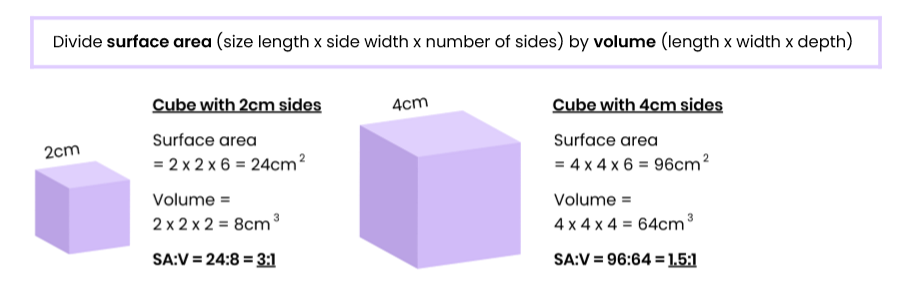3.1 Surface area to volume ratio
1/5
There's no tags or description
Looks like no tags are added yet.
Name | Mastery | Learn | Test | Matching | Spaced |
|---|
No study sessions yet.
6 Terms
Describe the relationship between the size and structure of an organism and its surface area to volume ratio (SA:V)
as size increases, SA:V tends to decrease
more thin / flat / folded / elongated structures increase SA:V
How is SA:V calculated? Use an example

Suggest an advantage of calculating SA:mass for organisms instead of using SA:V
easier / quicker to find / more accurate because irregular shapes
What is metabolic rate? Suggest how it can be measured
metabolic rate = amount of energy used up by an organism within a given period of time
often measured by oxygen uptake → as used in aerobic respiration to make ATP for energy release
Explain the relationship between SA:V and metabolic rate
As SA:V increases (smaller organisms), metabolic rate increases because:
rate of heat loss per unit body mass increases
so organisms need a higher rate of respiration
to release enough heat to maintain a constant body temperature i.e. replace lost heat
Explain the adaptations that facilitate exchange as SA:V reduced in larger organisms
change to body shape (e.g. long / thin)
increases SA:V and overcomes (reduces) long diffusion distance / pathway
development of systems, such as specialised surface / organ for gaseous exchange e.g. lungs:
increases (internal) SA:V and overcomes (reduces) long diffusion distance / pathway
maintain a concentration gradient for diffusion e.g. by ventilation / good blood supply